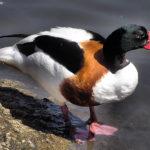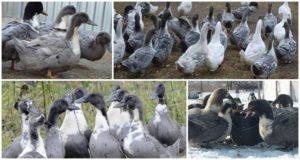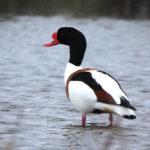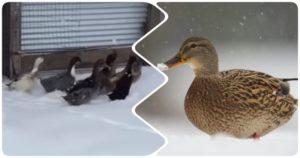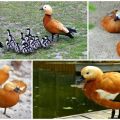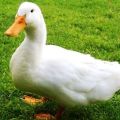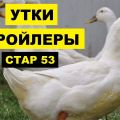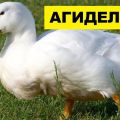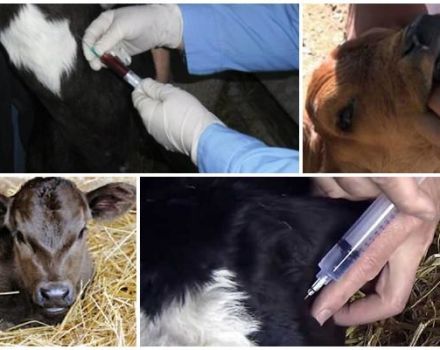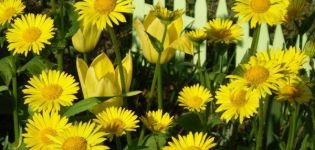Description of shelves and characteristics of the breed of ducks, lifestyle and the Red Book
Sheep are ranked among the duck family, scientists consider them to be a species intermediate between ordinary ducks and geese. In Russia, this bird is called an earthen or mound duck, as well as atayka, khorhal. Consider the description of the species, where it lives, what it eats, what way of life it leads, how it reproduces and rears its offspring. Features of domesticated shelves, how to maintain and care for them.
Bird description
Due to the fact that sheaths occupy a sort of middle position between real ducks and geese, they have characteristics inherent in both. In size, they are larger than wild ducks, but smaller than geese: the weight of a drake is 0.9-1.6 kg, and that of ducks is 0.6-1.3 kg. Wings with a wide span - 1.1-1.3 m. The body is large, proportionally folded, the legs are high, the tail is of medium length. The beak is deep red, the drakes have a well-defined bump, by which they can be distinguished from females.
Atayka has a characteristic plumage color: on the head it is black with green, the neck is also black, but with a white base and goiter. White back and sides. A wide reddish-brown stripe runs along the shoulders, sides and abdomen. On the belly, black feathers are interspersed with it. The flight feathers of the shelves' wings are black, the undertail is bright red, the ends of the tail feathers are black. Sheep eyes are red-brown, legs and beak are red. Sheep sheds 2 times a year: in summer and autumn. Juveniles are colored like females, which have the same color with males, but its shade is more modest.
Sheep's habitat
Ducks form 2 different populations in the areas of residence. The living conditions in them are different: in one, birds arrange nests on the sea coasts, in the other they live on open salt lakes and estuaries (dry regions of Central Asia).
On the territory of Russia, sheaths settled on the islands of the White Sea, in Western and Eastern Siberia. Ducks also live in the southern steppes and forest-steppes, in the Northern Black Sea region, Transbaikalia. In addition to the Russian territory, they are found in the Baltic countries, Britain, Ukraine, Greece, Moldova. Shepherds build nests on sandy hills, talus, in coastal thickets.
Breed nutrition
Sheep duck, or galgaz, prefers to settle on bodies of water with salt water. The feeding ration consists of plant foods and animals that live there. The basis of the diet is small molluscs, snails, crustaceans, small fish and fish roe. Aquatic insects, their larvae and pupae.Sheep and terrestrial insects eat when they come ashore, for example, beetles, locusts, earthworms. From plant food they use algae, sometimes they eat grass and seeds.
Ducks collect aquatic animals from the surface of the water, adults do not dive, although young animals retain this ability. Going to the seashore, they filter the silt left after low tide.

Lifestyle and social behavior
Sheep can be sedentary, migratory, or partly migratory. Migratory ducks winter in the Eurasian subtropics, in the Black Sea region, in the countries of the Mediterranean Sea. European shelves do not fly. After the end of the nesting site, ducks fly to large bodies of water, gathering in flocks of several thousand. They spend a month there, during which they are unable to fly.
When the molt ends, some of the ducks fly back to the nests, some from the cold area move to the warm one for wintering.
Shews often make characteristic sounds that differ in drakes and females. In the spring, when males chase females, they release a high pitched whistle. Another cry is characteristic of drakes - a dull "ha-ha", which is repeated several times. Females emit a dull quack, which is repeated several times, and with great speed. When frightened, the cry "ha-ha" is pronounced loudly and rolling.
Reproduction and parenting behavior
Sheep ducks can give birth at 2 years of age, drakes mate later - at 4-5 years. Courtship begins in March or April, 2 weeks after arrival. Up to 10 drakes can look after 1 female sheath at once.
Sheep nests are built in the holes of foxes, rabbits, marmots, badgers. Several ducks can hatch eggs in a large burrow. If there is no burrow, they can occupy crevices, abandoned nests, hollows, equip nests in pipes, buildings, tree roots, haystacks.
Sheep can hatch 8-16 eggs. Their shells are creamy or creamy white. Incubation lasts 27-31 days. The drake, while the duck sits, guards the hole. As soon as the ducklings hatch, they go with their parents to the reservoir. Each duckling is immediately able to move quickly, swim and find food on its own. By the age of 2 months, they become completely independent. Shelf lives, by bird standards, for a long time - up to 15 years.

Domestication of the breed
Ducks are not shy, they are not afraid of people. You can try to teach them. They can live in poultry houses with other birds, they can even be bred. Shelving should be fed with a balanced food of different types of grains, vegetables, fruits, young grass, duckweed. Wild ducks can live in an ordinary poultry house with walking and bathing. In general, their content is not particularly different from that of domestic ducks.
Red Book
In Russia, sheathing is listed in the Red Book of the Republics of Khakassia and Tuva. The species has the status of rare on the periphery of the nesting area. No measures have been taken to protect or distribute ducks.
Sheep is an interesting species of ducks that resemble geese in appearance and habits. They can be found on salt water bodies; they can be distinguished from other inhabitants by their characteristic white-black-red color, red beak with a bump. They are hunted for meat, which, like all game, is tougher than domestic ducks and has a specific smell.

